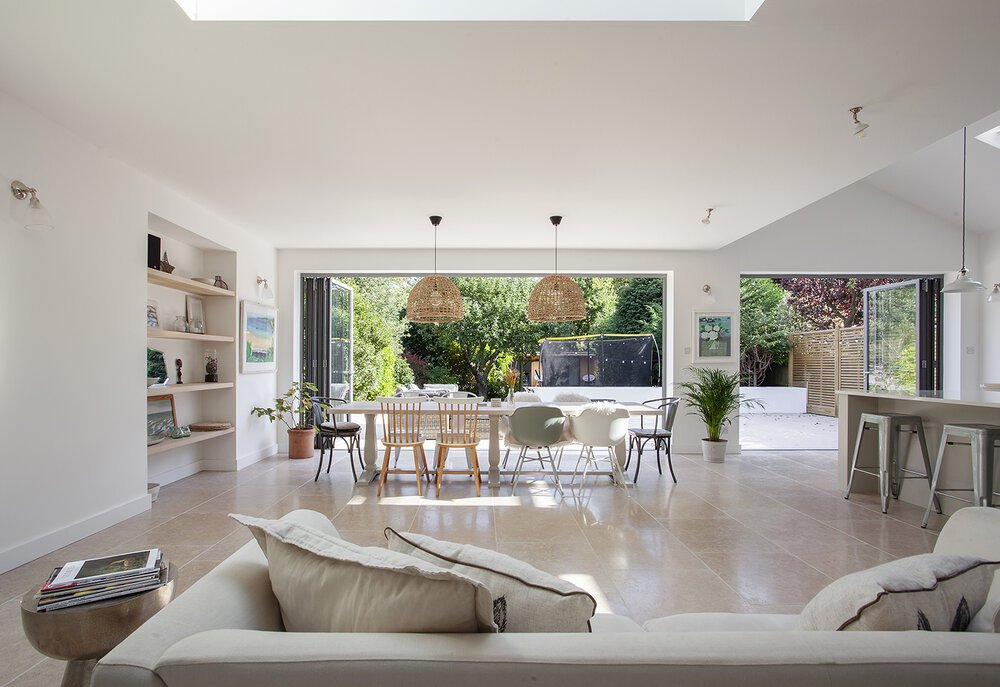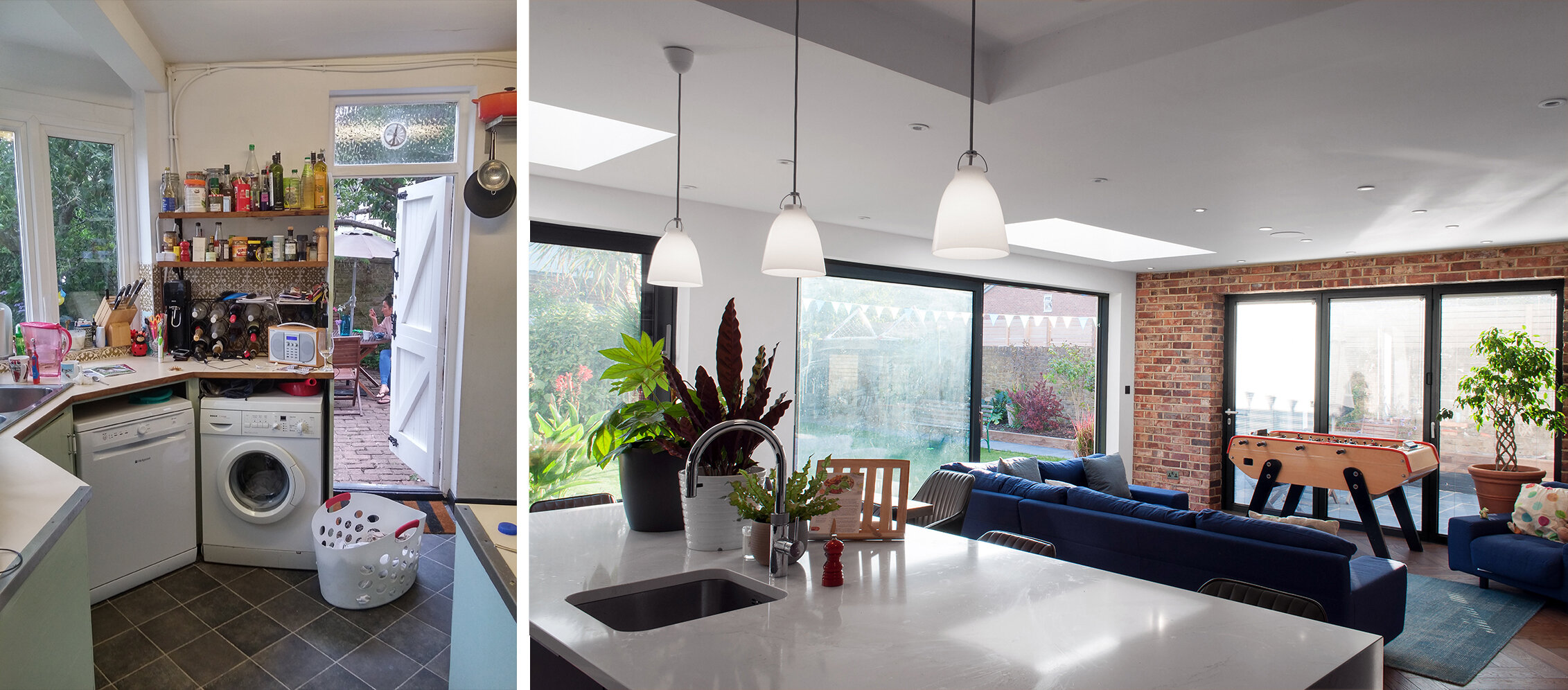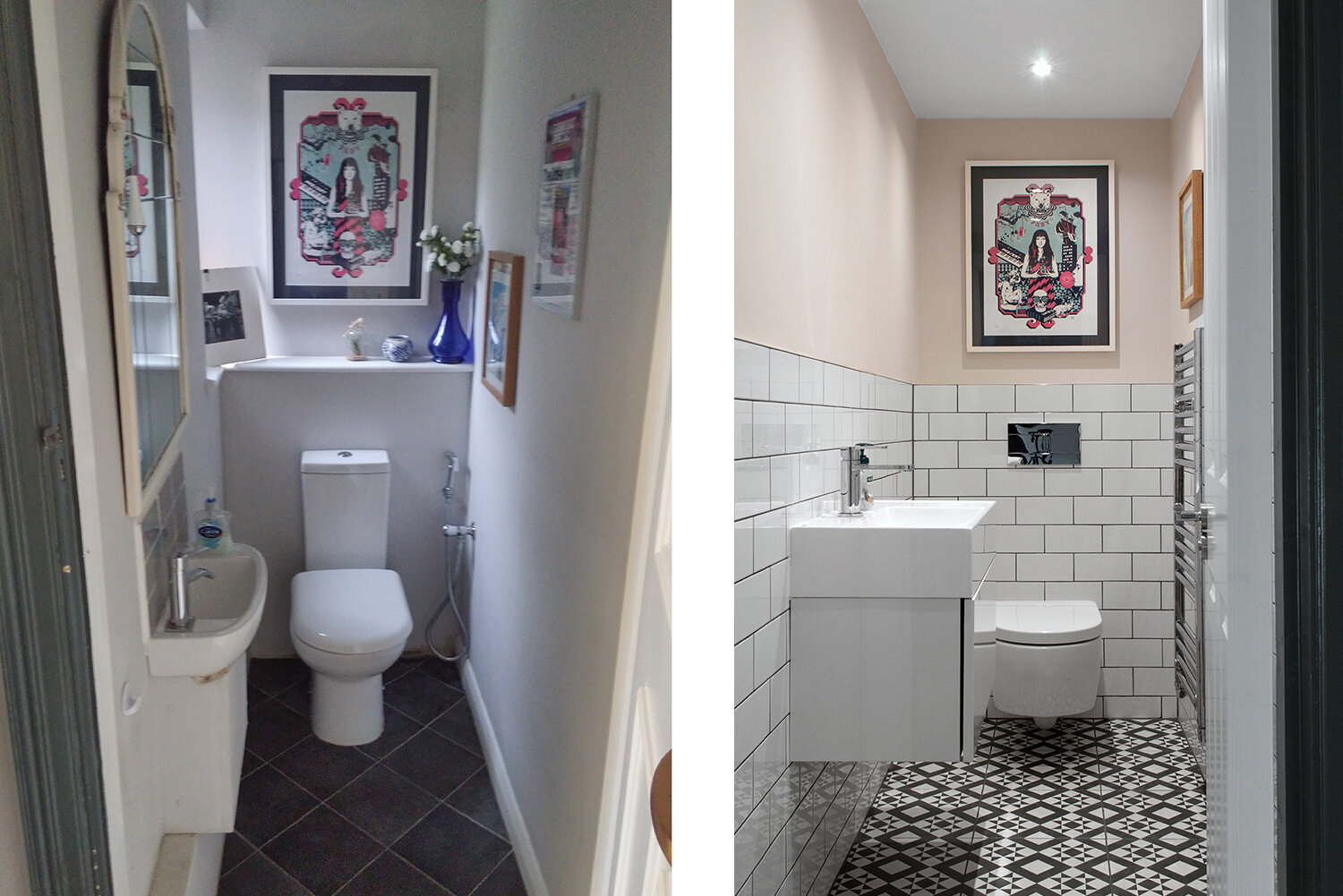This project was for an extension to a large detached house in Byfleet and New Haw for a family of three with a small child.
When the client got in touch with us in first instance, we visited the site and found that the house needed a renovation. The client was also not satisfied with the ground floor arrangement that was very partitioned and formed rooms that where both small and dark.
At first floor level the layout was more acceptable, however the house lacked the presence of a real master bedroom with a dressing area and an en-suite bathroom, which is something that you would expect from a property of this size.
Our brief was to extend a house with a rear extension and form a new open plan layout including a kitchen, dining area and sitting area. The client also requested a first-floor side extension on top of an existing garage that would provide space for an en-suite bathroom and dressing area linked to an existing bedroom.
We considered two options for the existing garage. The first one was to retain it and build on top of it and the the second one was to demolish and rebuild. As it often happens in these cases the option to replace the existing garage ended up being more cost-effective. It is not unusual to find period structure that are not able to carry any extra load from a structural point of view, especially at foundation level. In these instances, we always suggest our clients to hire a builder for a couple of hours, perform several trial pits and then submit the results to a structural engineer that will decide whether the existing structure is suitable or not. All the details will then need to be confirmed with Building Control.
The ground floor rear extension also features a set of large bi-fold doors that opens towards the rear garden and a window in correspondence of the kitchen sink. A set of two large flat roof lantern skylights also help bringing daylight in the new open plan area.
The first-floor side extension also features rear and front windows and a large skylight that guarantees uniform levels of daylight throughout the whole floor plan.
The clients’ feedback was very positive, and we appreciated hearing that they used their new spaces in a more practical way with their toddler always in sight. That's a big advantage of open plan layouts!
Before and after images






























